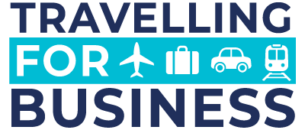First-ever airline sleep score index, ranking 50 global airlines by how well you can actually sleep on them
Spoiler alert: It’s bad news for Ryanair. Again.
In a bold move to help the sleep-deprived masses reclaim rest at 35,000 feet, the 2025 Airline Sleep Score Index has officially landed thanks to sleep tracking app Sleepagotchi who have ranked 50 global airlines by just how easy (or impossible) they make it to sleep onboard.
In-flight sleep has long been an overlooked aspect of passenger wellbeing, until now. With the release of the 2025 Airline Sleep Score Index, Sleepagotchi introduces the first comprehensive, data-led benchmark of how global airlines support passenger rest in the skies.
From seat measurements to circadian lighting systems, this ranking evaluates 50 of the world’s top carriers across four critical sleep-related categories.
Forget “best inflight service” or “best business class champagne.” This index asks the real question: “Can I actually sleep without contorting like a human pretzel or rage-tweeting midflight?”
The answer, as it turns out, depends a lot on who you’re flying with. Singapore Airlines tops the Sleep Score list with a dreamy 96.8 out of 100, thanks to excellent seat dimensions (33” pitch, 19” width), lighting optimized for sleep, and glowing passenger sentiment across social channels.
Qantas, long a pioneer in aviation wellness, scored 94.0, with an even higher 95.3 when flying its upcoming “Project Sunrise” lighting-enhanced cabins. Also placing in the top 10 is Air New Zealand (93.1), bolstered by innovations like the Skycouch and Skynest, economy sleep pods that actually let you lie down.
Meanwhile, premium cabins like Singapore’s Business and Alaska’s First also rank sky-high, proving once again: if you want sleep, you might need to shell out. Ryanair, EasyJet, and Wizz Air all tied for close to last place with a dire 65.7. That’s barely a passing grade, and honestly, generous. (Although there were lower ranking airlines of smaller scale.)
Seat pitch? A sadistic 28 inches. Seat width? A tight 16 inches, roughly the size of a car seat. Lighting? About as subtle as a nightclub on ecstasy. Passenger reviews? Ever read a rage thread from someone stuck in 14B? We did. All of them.
The Sleep Score Index is backed by a weighted methodology across four measurable categories: The factoring was weighted by seat pitch, 30% (distance between seat rows, aka legroom) seat width, 30%, cabin lighting, 20%, and finally social sentiment at 20% from real passenger feedback from social media and reviews.
Sentiment analysis from thousands of posts and reviews on platforms like Twitter/X, Reddit, Facebook, and airline-specific forums Data was normalized, scored out of 10 per factor, then weighted to create a composite Sleep Score out of 100.
Anton Kraminkin of Sleepagotchi said: “As a sleep-focused platform that gamifies better rest and wellness routines, Sleepagotchi is uniquely positioned to analyze how external environments like airplane cabins affect sleep quality.
Premium cabins aren’t a guarantee. Unless seat width crosses 19” and pitch exceeds 33”, don’t assume you’ll snooze like royalty. However, Premium Economy with upgraded seats (e.g., Singapore or Alaska Airlines) can offer sleep scores close to Business Class, without Business Class prices.
Lighting is the next battleground. Airlines that adopted human-centric lighting systems scored higher even with average seating (e.g., Etihad, Delta). Airlines investing in circadian lighting, such as Qantas and JetBlue, consistently rank higher.
Passenger sentiment is a big deal. Even with good hardware, airlines with negative passenger feedback (looking at you, American Airlines) saw their score tank. Budget carriers pay the price. Literally. All low-cost airlines in the index ended up in the bottom quartile, proving that sleep, like legroom, costs money.
If you’re planning long-haul travel this summer or just want to survive your next red-eye without arriving zombified, check the Sleep Score Index before you book. It’s not just about where you’re going, but how much recovery time you’ll need once you land.


